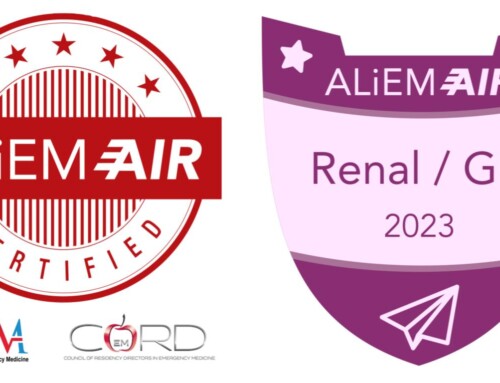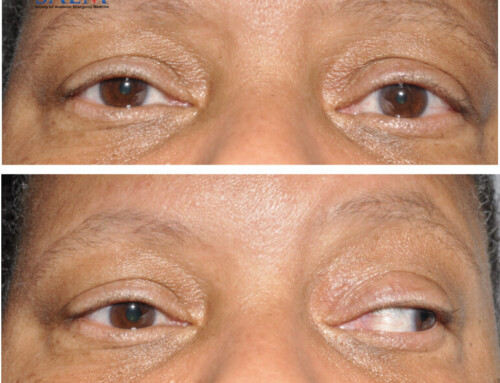
A 52-year-old male presents to the Emergency Department with a chief complaint of right lower abdominal pain with urinary frequency and urgency over the past week. The pain radiates from his right groin with 10/10 severity at times. He reports multiple diagnoses of urinary tract infections over the last year requiring oral antibiotics. He claims intermittent constipation, denies any trauma, and is a truck driver by trade.
Vitals: T 97.7 °C; BP 138/75; HR 75; RR 16; O2 sat 96%
General: WDWN obese male, A/O x4, in mild distress
Abdomen: Soft, nondistended, normoactive bowel sounds, no organomegaly. A 5 cm moderately tender soft tissue bulge suggestive of a direct hernia is palpated in the right inguinal area and is reduceable.
Complete blood count (CBC): Within normal limits
Complete metabolic panel (CMP): Within normal limits
Urinalysis (UA):
- Color: Cloudy, yellow
- Blood: Trace
- Leukocyte esterase: Positive
- Nitrite: Positive
- WBCs: 15-30 hpf
- RBCs: 3-5 hpf
- Bacteria: Moderate
This patient’s CT scans demonstrate an inguinal herniation of the urinary bladder, which occurs in less than 4% of all inguinal hernias. The clinical finding of a soft tissue mass in the groin in the setting of recurrent urinary tract infections should include urinary bladder herniation in the differential diagnosis.
Oral or parenteral antibiotics based on clinical presentation and prevalent sensitivities should be given to address urinary tract infections. Emergent or non-emergent (if reduceable) surgical consultation, usually by a urologist, is standard. Surgical reduction and repair techniques that utilize mesh versus non-mesh have been associated with a better prognosis with less recurrence.
Take-Home Points
- Although rare, an inguinal herniation of the urinary bladder should be considered in males over 50 years old who have a herniation on physical exam and urinary complaints.
- Risk factors include obesity, BPH, and male sex. This condition is diagnosed in very few women.
- Computerized tomography is the usual imaging modality to diagnose a urinary bladder herniation.
- Patients may be asymptomatic or have symptoms that may include inguinal pain or swelling, urinary retention, and acute renal failure.
- Manual compression of hernia to void is pathognomonic for a urinary bladder herniation.
- Branchu B, Renard Y, Larre S, Leon P. Diagnosis and treatment of inguinal hernia of the bladder: a systematic review of the past 10 years. Turk J Urol. 2018 Sep;44(5):384-388. doi: 10.5152/tud.2018.46417. Epub 2018 Sep 1. PMID: 30487042; PMCID: PMC6134980.
- Papatheofani V, Beaumont K, Nuessler NC. Inguinal hernia with complete urinary bladder herniation: a case report and review of the literature. J Surg Case Rep. 2020 Jan 2;2020(1):rjz321. doi: 10.1093/jscr/rjz321. PMID: 31911827; PMCID: PMC6939942.
Copyright
Images and cases from the Society of Academic Emergency Medicine (SAEM) Clinical Images Exhibit at the 2023 SAEM Annual Meeting | Copyrighted by SAEM 2023 – all rights reserved. View other cases from this Clinical Image Series on ALiEM.

Taran Carrasco
University of South Alabama

Latest posts by Taran Carrasco (see all)
- SAEM Clinical Images Series: A Rare Cause of Recurrent UTI - October 6, 2023

Michael Sternberg, MD
Department of Emergency Medicine
University of South Alabama

Latest posts by Michael Sternberg, MD (see all)
- SAEM Clinical Images Series: Enigmatic Traumatic Hip Pain - December 22, 2023
- SAEM Clinical Images Series: Intracranial Abnormality - October 27, 2023
- SAEM Clinical Images Series: A Case of Painful Skin Lesions - October 20, 2023





